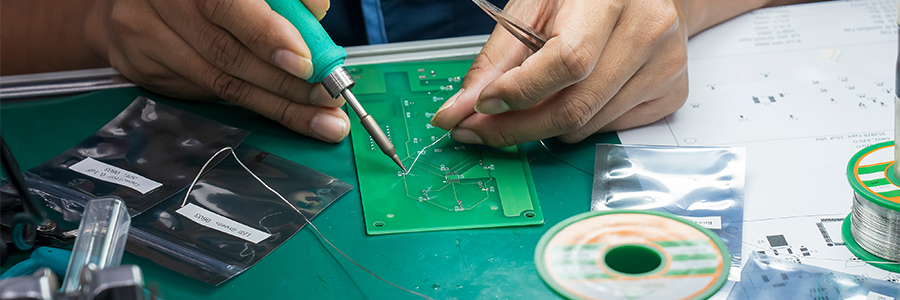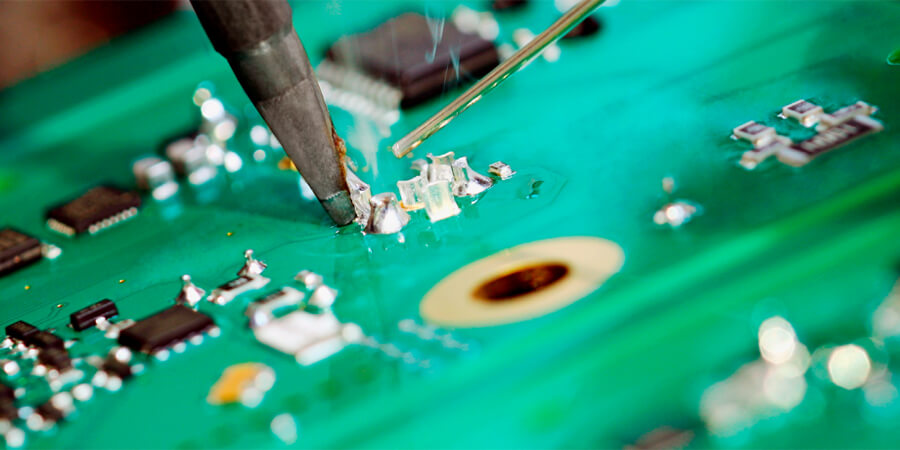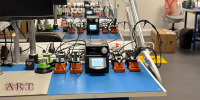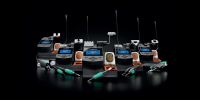


In our last post, we touched upon 10 common soldering problems that you can encounter.
This ranged from hand soldering, to selective and wave soldering issues.
We feel it is appropriate to revisit and provide a few more additional precautions that can apply to your soldering process.
Unfortunately, there is no cut and dry solution that completely avoids the problems mentioned in the other post. But if you heed our advice here, you can go a long way towards preventing them.
Summary Of PCB Soldering Problems
If you have read our previous post, you will have seen we discussed a couple of ways that can help you to avoid PCB soldering problems. Here is a quick summary of those:
- Using the correct soldering temperature to avoid either cold or overheated soldering connections.
- Ensuring that the right amount of solder is being used for each of the solder joints. Too little or an overcompensation of solder can be equally as harmful.
- Make sure to use the correct flux for your application. This will aid in providing a sufficient and appropriate wetting process.
- General integrity of your PCB. Checking for any tomb stoned components, lifted pads, pin holes or solder splashing. Each of these can cause short circuiting and even render the PCB you are working on redundant.
Adding on from these fixes we have already mentioned, check out below for 4 other tips that can help you to prevent PCB soldering problems.
1 – Layout & Cleanliness Of Your PCB Clean
The design and condition of your board plays a part in protecting its integrity.
Firstly, the cleanliness of your PCB is likely the easiest of the two to remedy and control. This comes down to 2 main factors – storage and your pre soldering routine.
Ensuring that both are tended for prevents moisture and contaminants from effecting your soldering performance. This can be achieved through the use of moisture barrier bags or PCB cleaners.
Regarding the design of your PCB, this can have grave implications to the soldering.
If you are in the process of designing or composing the layout of your PCB, there are some definite rules of thumb that must be adhered to. Doing so will help you to avoid soldering problems on your PCB.
Here are just a few that need to be thought about:
- Adequate spacing of the components, making it easier to conduct soldering work.
- Location of your components, which in some instances can be crucial. For example, when wave soldering, you should always make sure that the leads are perpendicular to the flow direction of the wave.
- Ensure holes for through hole components are not too large. This can create a poor solder connection as the solder disperses too quickly.
2 - Place Fiducial Marks
Although not a direct soldering problem as such, this issue is more focussed on the design of your PCB.
Fiducials are reference points on your PCB that are designed for automated soldering applications. They help to allow the machine to recognise where components are in the space of the PCB.
They are usually round bare openings in the solder mask, with bare copper in the centre.
Pick and place machines in particular use these as reference points, particularly for components that require specialist treatment.
With accurately placed fiducial markers, you increase the placement accuracy of your components exponentially.
There has been a lot of debate as to whether fiducials are needed anymore. Modern machinery for pick and place applications has improved drastically. However, you are always running the risk should the fiducials not be in place.
Discuss the extent of your machines capabilities with the manufacturer before making any decision on whether you require local fiducials on your PCB.
3 - Cleaning & Tinning Your Soldering Tips
Another PCB soldering problem involves operators using badly oxidised tips. Poor tip maintenance can severely affect the quality of your solder joints. Luckily, with a bit of soldering housekeeping, this can be easily avoided.
But firstly, lets just briefly describe how poor maintenance can hamper your soldering output. Any kind of contamination or oxidisation will affect the tips ability to conduct heat sufficiently.
This can often lead to one of two outcomes. The soldering is conducted at a lower than optimal temperature, causing cold solder joints. Your other outcome involves the operator attempting to compensate this by ramping up their operating temperature, which is never good.
To avoid this, you can take measures to care for your soldering cartridges. The main ways to do this involve cleaning your tips and tinning them.
Cleaning – You should ensure that your soldering tips are cleaned before, during and after every use. You can do this by using either brass or steel wool. Alternatively, you can invest in a soldering cleaning system which include motorised brushes to keep your tips clean.
Tinning – The process of tinning your tip involves coating the point with a thin layer of solder. This helps to protect the tip from oxidisation by acting as a protective layer between the outside air and soldering cartridge.
You can check out more about caring for your soldering tips in our post here.
4 - Practice Your Soldering Technique
Soldering is a skill that requires honing and mastery.
The technique requires finesse and hands on experience just as with any skill. Here are some basic handling tips to adhered to:
- Pressure – One of the most common issues with soldering technique is the use of too much force. There is no need to apply more pressure than necessary. When soldering, ensure that you have contact with the cartridge, wire, and PCB, which should be sufficient. Too much pressure damages your solder tip.
- Balanced & Secure Grip – In most instances you will require the soldering iron in one hand with wire in the other. Ensure everything is within arm’s reach so that you do not have the iron switched on and burning whilst frantically searching for something on your bench.
- Removing Soldering Iron – It is important to take care when removing the soldering iron from the PCB. When it is jerked away or removed at the wrong angle, it can lead to solder webbing or splashes (not great for the conductivity of your PCB). Instead, you must gentle lift the handpiece.
The best way to improve your soldering technique is through use. You could even use soldering practice boards if the project you are working requires the ultimate precision or to avoid incurring monetary costs through errors.
These exercise boards for soldering can come in many different variations, for hand soldering and machine runs. They provide a cost-effective solution ensuring the finished product is soldered accurately the first time of asking.
To Conclude...
Hopefully this post has given you some handy tips that you can apply to your soldering work in the future.
Therefore, by heeding this advice you can avoid wasting time and save money remedying PCB soldering problems.
For further information regarding products that can aid in your soldering applications, contact Kaisertech today.















